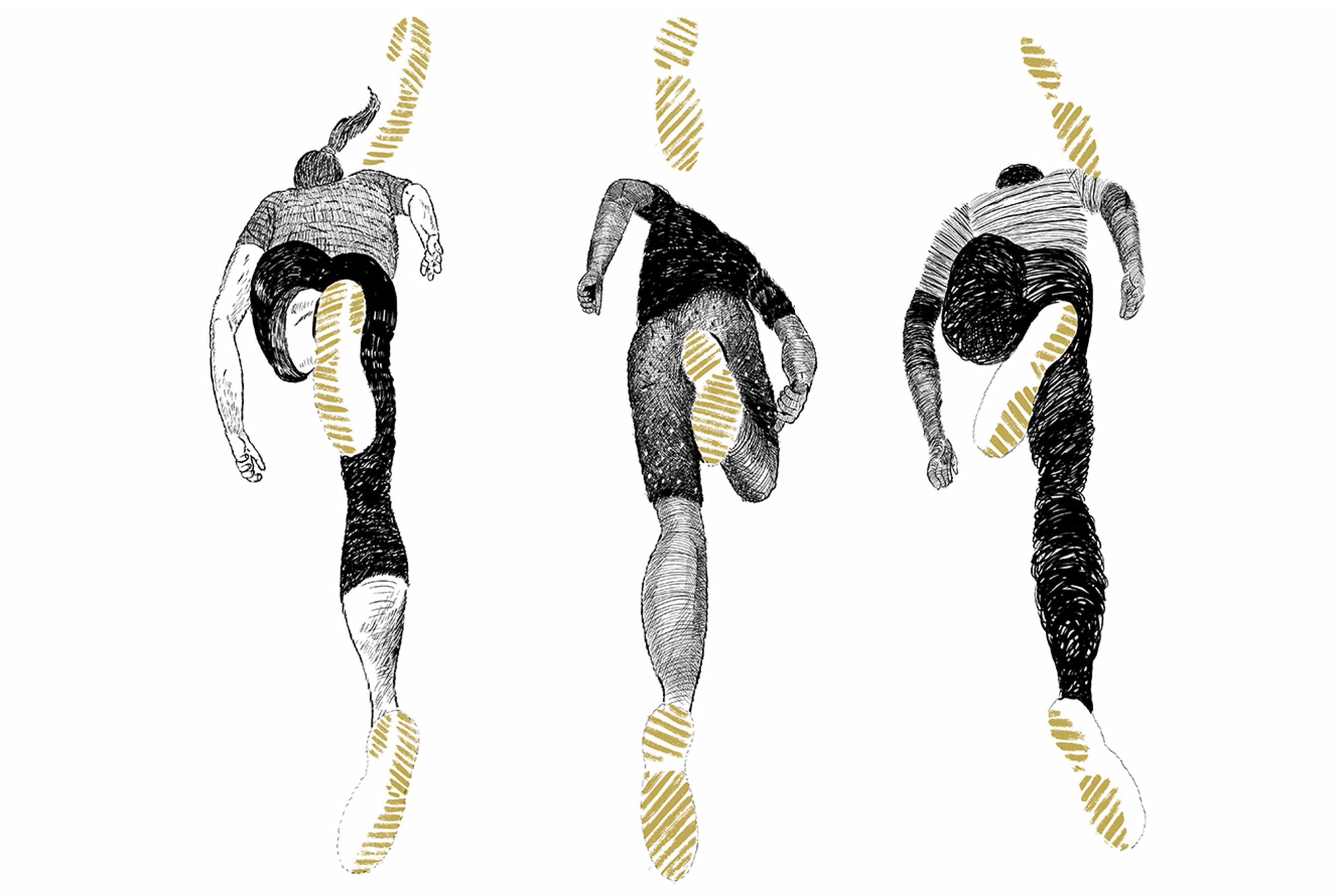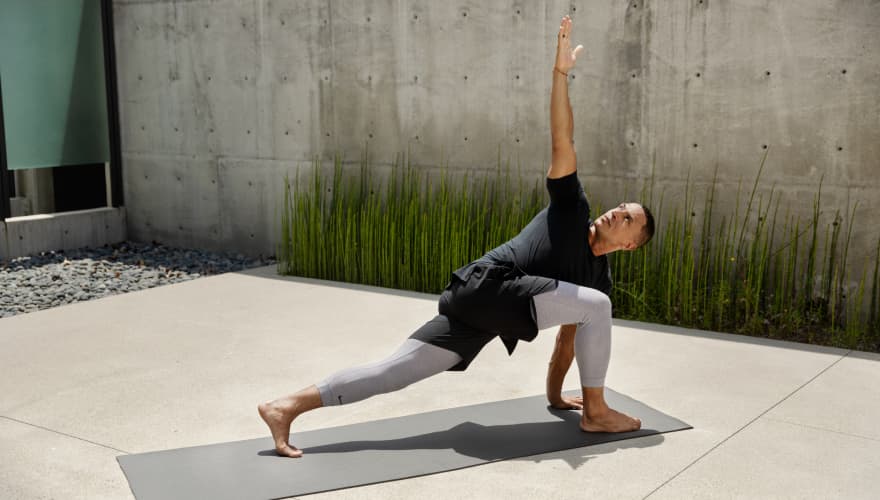Put Your Best Running Feet Forward
Coaching
Over or underpronate? Learn what to do (and what not to do) to help neutralise the potentially risky issue.

Ever looked at a worn out pair of shoes and thought, "Huh, I wonder how those got so warped on the side?" That's what happens if your feet collapse inwards when you walk or run, called overpronation, or if your weight falls on the outer edge of your feet, known as underpronation or supination.
Neither of these tendencies are wrong, per se, but they are worth being aware of as you ramp up your runs. Here's why.
The Purpose of Pronation
Everyone needs some degree of pronation, or side-to-side flexing of the foot. When a person runs, the foot naturally tilts inwards to a pronated position with each step. As they push away from the ground, the foot tilts outwards into a supinated position, explains Kate VanDamme, a physical therapist and orthopaedic clinical specialist at the NYU Langone Health Sports Performance Center. This shifting keeps us nimble on our feet and able to navigate uneven terrain, says Lee Welch, a doctor of physical therapy specialising in lower-extremity injuries in runners and the co-owner of The Running PTs. Most important, he says, "it's a way for your body to absorb force so you don't hurt yourself".
It's when your foot tilts excessively inwards or outwards that pronation goes from a natural, neutral movement to a risky one. And because each foot strike during a run exerts a force about six times your body weight, under or overpronation can prevent your body from optimally distributing that force, which can lead to a host of injuries.
The Issue with Overpronating
Not surprising, but running on collapsed arches doesn't set your body up for stellar form. For starters, you won't be able to lift your foot as quickly from the ground, which means more ground contact time and more force shooting up your leg. "Often, if someone is overpronating, we see a collapse of the entire chain of the body, which can include their knee bending inwards paired with a dropped hip on the opposite side", says VanDamme.
On top of that, if your foot is collapsing inwards, your femur and tibia are internally rotating more too, says Welch. The instability that creates in the bones of your big toe can lead to plantar fasciitis, IT band friction, piriformis syndrome, knee pain or shin splints, he says—all potentially sidelining injuries you want to avoid, just guessing.

The Ugly Side of Underpronating
The opposite won't do your body much good either. When your foot underpronates, or supinates, the joints of your foot don't move to absorb shock and the majority of your weight falls on the outer edge of the foot. This can cause your legs to bow outwards, says VanDamme. "Landing in this position makes everything more rigid". Your joints don't absorb the pounding of running as well, which can lead to the bones absorbing more of the shock and contribute to stress fractures, a more serious, longer-lasting injury, explains VanDamme.
"Pronating is a way for your body to absorb force so you don't hurt yourself".
Lee Welch
Doctor of Physical Therapy
How to Check Your Gait
If you're feeling aches or pains, see a physical therapist to get an actual gait analysis on a treadmill. If you're feeling good but would love a second opinion, you could go to a running store. (Associates there often do gait analysis, but they probably don't have medical backgrounds, so take their feedback with a grain of salt). Or you could self-diagnose by looking at your most loved running shoes. Do you see excessive wear on the inside edge of the soles, either at the forefoot, the heel or both? This could be a sign of overpronation. Is the sole threadbare on the outside edge? That may be from underpronation.
Still unsure? Place your shoes on a flat surface: an inward tilt indicates overpronation; an outward tilt, underpronation.
Your Move If You Over or Under-Do It
All right, let's start with what not to do: Don't overhaul your natural gait just to avoid your pronating tendencies. While it's good to be mindful of your form, at some point, how you run is how you run, and focusing too much on changing it can derail your runs, says Nike senior director of global running Chris Bennett, aka Coach Bennett.
Instead, look to your shoes. They can make a difference in your running mechanics and injury risk without you having to change your gait. If you tend to overpronate (the more common issue), consider a stability shoe, says Welch. They have a firmer midsole on the arch side of the foot and offer more support so your foot is less likely to tilt dramatically. For underpronators, shoes that provide more cushioning and shock absorption can lessen the chance of stress-related injuries. As long as your shoes feel comfortable, though, you have a better shot at lowering your risk of getting hurt, according to a review published in the British Journal of Sports Medicine.
Beyond your shoes (which, BTW, won't fix your pronation issues), strengthening the muscles in your feet (try big toe raises) and working on foot and ankle mobility (start foam rolling your calves) can at least temper the problem, says Welch.
Ideally, you'll become a more neutral runner over time. But if you don't—and you don't get injured repeatedly—no worries. Keep calm and carry on—mindfully.
Words: Ashley Mateo
Illustration: Ryan Johnson

Take It Further
For more expert-backed guidance on movement, as well as mindset, nutrition, recovery and sleep, check out the Nike Training Club App.
Take It Further
For more expert-backed guidance on movement, as well as mindset, nutrition, recovery and sleep, check out the Nike Training Club App.